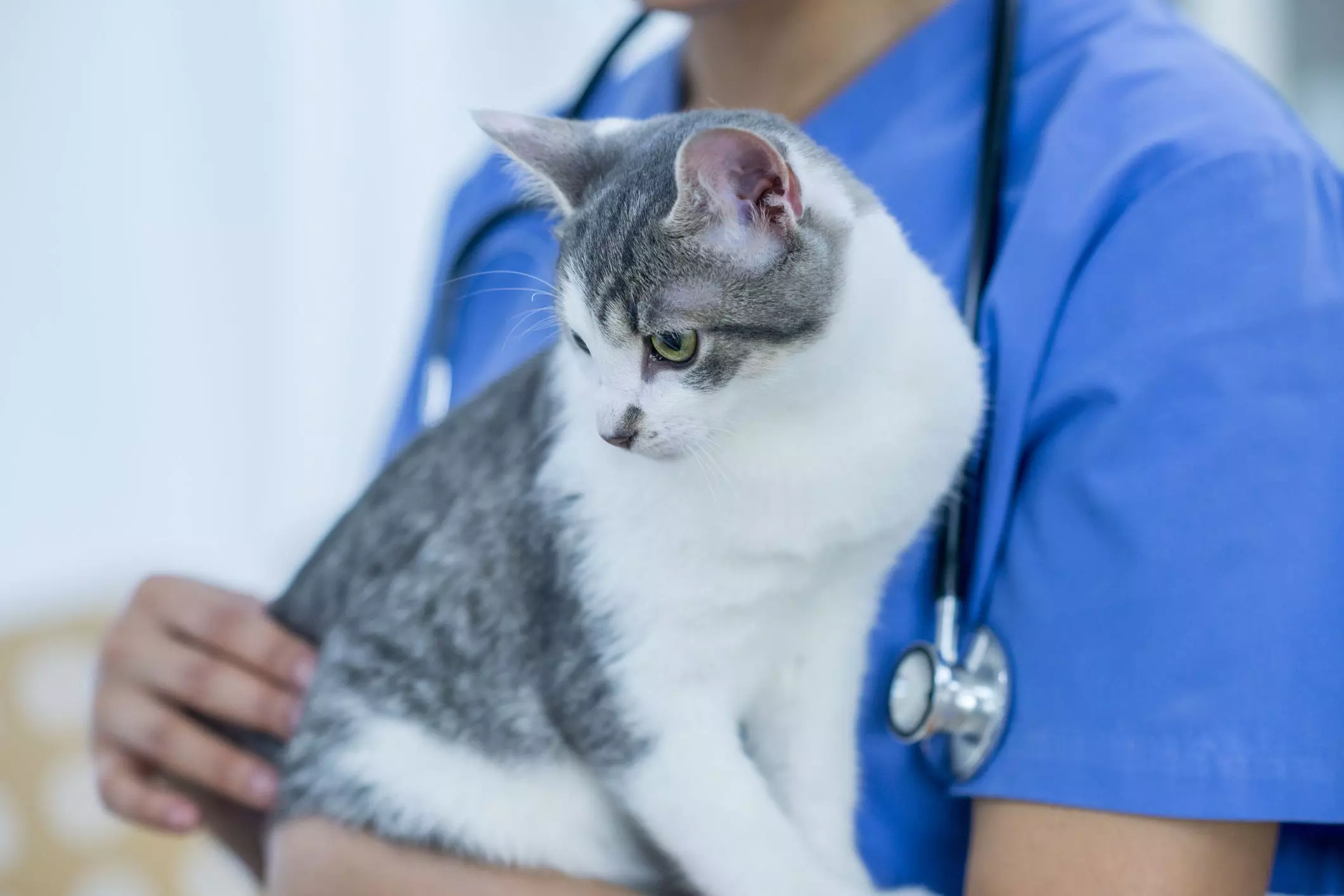Reviewed by Dr. Sarah Yosry
Updated on 09/27/2024
Reading time 4 min.
Overview
Severity: Medium
Life stage: All
If you notice a white discharge from your cat, do not panic. In most cases, vaginal discharge is a physiological process. If the discharge is white, odorless, and without any inclusions, it likely indicates that the cat is ready to mate. Such discharges can last for two or three days. However, if you find blood inclusions or an unpleasant odor in the discharge, it is essential to consult a veterinarian immediately. Your pet’s health is our priority, and our experienced team at Dubai veterinary clinic is ready to provide the care they need. Explore our comprehensive services today to ensure the well-being of your beloved companion.
Types of Discharge and Their Causes
Vaginal discharge can occur for various reasons, and it is not always easy to detect due to cats’ cleanliness and their tendency to lick the area. The discharge may be watery, clear, white, purulent, bloody, dark green, or brown.
The primary causes include:
- Pregnancy. After giving birth, dark greenish or even black discharge is normal and can persist for up to three weeks. If red patches are found in the discharge during pregnancy, consult a veterinarian, as a miscarriage may be possible. Blood in the discharge after pregnancy might be due to abnormal placental expulsion.
- Hypothermia. This can cause inflammation in the genitals, leading to excessive white discharge. In such cases, it is crucial to consult a veterinarian.
Inflammation and Infection. Purulent discharge and blood inclusions can result from diseases causing inflammation and infection of the uterus, such as:
- Endometritis. Rotting parts from the placenta in the postpartum period can lead to endometritis due to genital infections or hormonal imbalances. If left untreated, it can develop into pyometra, infertility, or sepsis.
- Pyometra. This condition mainly affects unsterilized cats over five years old. Hormonal imbalances cause pus accumulation in the uterus, resulting in cream and brown discharges. The most dangerous situation occurs when the pus remains in the uterus and does not come out, which can be fatal if left untreated.
- Hydrometra. This typically arises from complications of chronic endometritis. The uterine gland’s secretions accumulate in the uterus and are not easily expelled due to a blocked cervical canal. In such cases, the discharge may be minimal.
- Hematometra. Characterized by minor bleeding, pain in the form of contractions, and fever, hematometra occurs when the cervical canal is blocked, leading to blood accumulation. This can be caused by miscarriages, abortions, muscle spasms, birth defects, fibroids, and other factors.
- Vaginitis. This condition can result from vaginal trauma after pregnancy and a weakened immune system.
It is essential to consult a specialist when detecting secretions, as they can be symptomatic of severe diseases such as cancer, uterine trauma, clotting problems, vaginal phlegmon, or placental abruption.
Treatment Methods
If the cause of the discharge is physiological, no treatment is necessary. Inflammation symptoms may also appear during the first heat or after sterilization, but these usually resolve on their own.
Individualized treatment methods are prescribed if the abnormal discharge is observed and are based on the diagnosed cause. It is crucial to follow the veterinarian’s prescribed treatment to ensure the animal’s recovery. During the treatment process, closely monitor the pet and promptly inform the veterinarian of any changes in the animal’s condition.
Put your cat’s health at the forefront with our comprehensive ‘Vet for Cat’ services.

Share this, choose your platform!
Writen by
Dr. Sarah Yosry
DVM
A product of a rich Australian/Egyptian heritage, Dr. Sarah Yosry stands as a testament to the union of diverse cultures and a shared love for animals…


